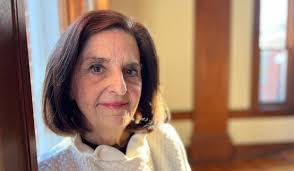Across the street from the main campus lays a Zen-like oasis where Chinese room dividers serve to separate one workspace from another and light classical music plays from some secret location, setting a very relaxed scene for the look and feel of the Office of Advancement.
The building houses a team of professionals that reaches out all over the world for donors willing to give money to the school, a team that is fundraising for the college’s capital campaign around the clock.
“It takes a lot of time to cultivate a donor,” said 30-year veteran of philanthropy Mike Poston, vice president for advancement. “In some cases it takes three years to get some of our larger contributors to commit and give to the college.”
The effects of the country’s economic crisis has crashed down on higher education by way of shrinking endowments, less financial aid, and staffing cuts at colleges and universities nationwide.
There is no denying Guilford’s need for donors.
“Our college, like others, depends heavily on donors and tuition to keep the college running,” said Ty Buckner, associate vice president for communications and marketing.
Guilford began a $75 million capital campaign in 2006 following a study driven by the first Strategic Long-Range Plan put in place by the college. It had completed a $56 million campaign in 2002.
Poston said that the campaign addressed the immediate needs of the college but was not driven by a strategic long-range plan.
“That campaign’s focus was more bricks and mortar and some endowment growth.”
However, at the time of the 2006 philanthropic market study, which guided the goals of the current campaign, no one could have predicted the 2008 economic crash. In 2011, the Board of Trustees agreed that the campaign should have a more realistic timetable.
“We were working on unrealistic expectations considering the economic climate of the country, which is why the board separated the campaigns into two realistic goals,” said Danny Gatling, senior director of philanthropy.
Phase one of the capital campaign calls for $60 million to be raised by June 30, 2014. Once that is accomplished, the college will then focus on raising the remaining $15 million.
“So far we have raised $50.7 million,” said Poston. “It is not just big gifts that help the college.
While some colleges and universities, such as the University of North Carolina at Chapel Hill and Duke University, are embarking on multi-billion-dollar capital campaigns, Guilford remains modest and realistic where fundraising is concerned.
And at the end of the day, Poston says it is all about students getting a quality education in the face of a frail economy and rising educational costs, which is what is on donors’ minds when they give to an institution.
“In many respects, capital campaigns never stop taking place,” said Poston. “As long as there is a need for the college to educate there will always be a need to raise money.”
The other half of the equation, explained Erin Mezgar, annual giving associate, is student involvement and pride in their school.
“There are many ways students can help,” said Mezgar. “Being phon-a-thon callers, contributing to the senior gift campaign, interning in the office, writing thank you notes. These are seemingly small things, but this helps raising awareness of our current campaign and beyond.”
Justin Bradley, a senior who is interning in the Office of Advancement, said he didn’t know much about the department or alumni donations when he started at Guilford, though that is quickly changing.
“There is some separation being that the physical office is across (the street) from the college,” said Bradley. “Now being a senior, I am starting to see the importance of giving back to Guilford. I guess that comes with maturing.”






